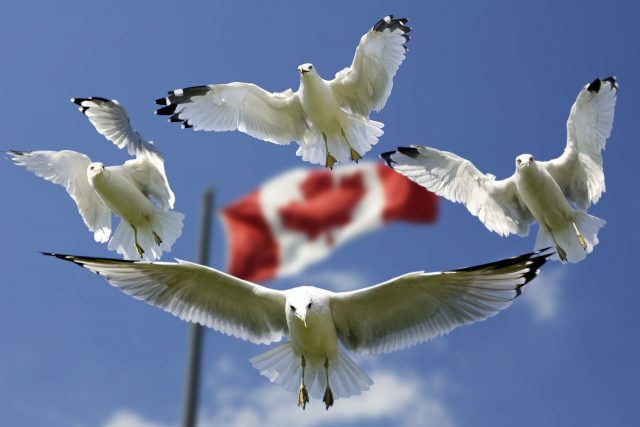Which language is the closest to French?
Posted by Josh on 16th Oct 2024 in the blog in the french culture category
Research suggests that the more languages you know, the easier it becomes to learn new ones. This is especially true if the language you’re learning is similar to one you already speak. A native German speaker, for example, would likely have a far easier time learning Dutch than Korean.
But what if you’re a French speaker? You might be wondering which language to embark on next, now that you have a good understanding of French.
The good news is that if you’ve learned French, you’ve also learned many of the building blocks of a number of different languages spoken all around the world. And if you don’t speak French but have some knowledge of any of these languages - including English - you already have a headstart when it comes to learning French!
Which language is the closest to French?
The answer isn’t all that simple…
There are many languages that are closely related to France, but they are often related in different ways, for instance grammatically or in terms of shared vocabulary. Some, such as Quebecois, are so close to French that linguists argue over whether they are different languages at all, or merely dialects of French.
French is a romance language, which means that it’s derived from Latin, and it shares this foundation with other romance languages. Latin hasn’t been a vulgar language - that is, spoken by the public, rather than in certain elite or ecclesiastical circumstances - for nearly 1500 years, so the French spoken in 2024 is a different kettle of fish altogether, and would be completely unintelligible to a citizen of Roman Gaul. The language known as Old French - the language spoken throughout the northern part of modern-day France during the medieval period - is of course closer to the French we know and love today than Latin, but is no longer spoken at all (and it’s debatable whether it can even be considered a different language, or simply an earlier stage in the evolution of the French language). Other langues d'oïl dialects - offshoots of Old French spoken around the north of France and Belgium - similarly died out as the French nation unified behind a standardised common language in the wake of the French Revolution.
The other living romance languages, however, share much in common with contemporary French. There are over two dozen romance languages spoken today, including French, Italian, Spanish, Portuguese, Catalan, Occitan, Asturian and Romanian. These languages are typically named after the region in which they are most commonly spoken, and the closer such regions are to France, the closer that language will be to French. Let’s take a look at a couple of words to see how they transform on their journey away from France.
'Church': église (French) - glèisa (Occitan)- església (Catalan) - iglesia (Spanish) - ilesia (Asturian) - igreja (Portuguese)
'Shirt': chemise (French) - chamischa (Romansch) - camicia (Italian) - cămaşă (Romanian)
Of these languages, Occitan and Catalan are also spoken within France - but that fact alone doesn’t necessarily make them closer to French, linguistically speaking. Each of the romance languages evolved in their own way from Latin. Indeed, linguists generally believe that Italian is the closest of all romance languages to French. While the staccato nature of Italian pronunciation, in which every syllable is clearly distinguished, and the lack of silent letters can make the language seem a world away from French, many of the words used in both languages are nearly identical, as well as many components of grammar and syntax. Compare the following sentences, for example.
French: j'ai besoin d'un ami qui parle français
Italian: ho bisogno di un amico che parli francese
As for the other regional languages of France, you might be surprised to discover that these don’t have all that much in common with French. That’s because, for the most part, they have different ancestors. Breton, for example, is a Brettonic language, while Alsatian is Germanic and Basque is what is known as a language isolate, meaning it has no fundamental connection to any other language.
Creole
A Creole language is a language formed from the fusion of two or more pre-existing languages. Often such languages are created in places where different cultures, speaking different languages, have needed to form a new language to communicate with one another. Several different Creoles have developed in former French colonies, from the Seychelles to French Guyana to Louisiana.
While the romance languages share the same bases as French, and many of the words are similar in spelling and pronunciation, Creole languages often have completely different foundations while possessing many of the same words or phrases. Haitian Creole, for instance, combines a largely French vocabulary with a grammar system influenced by Volta and Conga language groups. It has over 12 million speakers, and many linguists believe it to be the most similar Creole to French. By way of example, notice how the phrase ‘Est-ce-que vous parlez français ?’ is phonetically very similar in Haitian Creole: ‘Èske ou pale fransè?’
Conclusion
In summary, Italian, Haitian Creole and - if we’re including dead languages - Latin are all contenders for the closest language to French, each for different reasons. Of course, none of these are so similar that you’ll be able to understand them simply by knowing French - but it might make the job of learning them a lot easier.
Check out some of our other blog posts!
La Grande Odyssée sled race
Posted on by Josh in the french culture categoryThe annual dog sled race is in its 20th year
Read moreThe History of French in Canada
Posted on by Kafi in the french culture categoryThe French Language has many variations over the years.
Read moreHave fun learning French Today
People from all over the world enjoy learning French with Alexa Polidoro’s popular French audio and video lessons.




